On Tour, Part 1
I thought I'd use my column today for a little detour from the design talk to take a fond look back at the first fifty Pro Tours. My hope with this column is to give readers unfamiliar with the Pro Tour an introduction to the rich Pro Tour history, and for the rest a nostalgic look back. I'll even throw in a few personal stories. Be warned that this column is going to be a little longer than normal.
A Quick Pre-History
From the day it was released, Magic was a runaway hit. For about a year and a half, in fact, Wizards of the Coast had trouble meeting demand. But eventually by 1995, Wizards was able to print as many cards as the public wanted. This meant it was time to look at the next big development for Magic. A quick look around the building brought the answer. The fastest growing part of the company was Organized Play.
Wizards, it turned out, was not just selling a game, but rather an entire experience. What good is a game if there's no one to play with? This philosophy led Wizards very early on (in late 1993) to create the Duelist Convocation (the “DC” of “DCI” – the later added I is for International). The DC(I) worked very hard to help tournament organizers from around the world run Magic tournaments.
 And in 1995, all was going well. But then Magic Brand Manager Skaff Elias (one of Richard Garfield's original playtesters) felt that Organized Play needed to step up to the next level. There needed to be a structure to the tournament scene. Players had to have something to aspire to. And thus was created the Pro Tour (very briefly called the Black Lotus Tour).
And in 1995, all was going well. But then Magic Brand Manager Skaff Elias (one of Richard Garfield's original playtesters) felt that Organized Play needed to step up to the next level. There needed to be a structure to the tournament scene. Players had to have something to aspire to. And thus was created the Pro Tour (very briefly called the Black Lotus Tour).
I started working full-time in the fall of 1995. Because I had been a judge before coming to Wizards, I suggested to Skaff that I should be the R&D representative to the Pro Tour team. He agreed. This meant that I was involved with the Pro Tour from early on. One of my fondest memories is the early Pro Tour team sitting around talking about how we wanted the Pro Tour to work.
Our two biggest fears? One, that there wouldn't be any compelling Pro Tour celebrities (Magic is a little more sedate than something like extreme sports) and two, that the Pro Tour would prove that the game is less skilled based than we thought (every Top 8 would have different names). As you will see, both fears proved quite unfounded.
SEASON ONE ('96)
Pro Tour-New York (February 16 –18, 1996)
FORMAT: Standard, New York Style (Decks must have five cards from each available expansion in either deck or sideboard)
1) Michael Loconto (United States)
2) Bertrand Lestree (France)
3) Leon Lindback (Sweden)
4) Preston Poulter (United States)
5) George Baxter (United States)
6) Mark Justice (United States)
7) Shawn “Hammer” Regnier (United States)
8) Eric Tam (Canada)
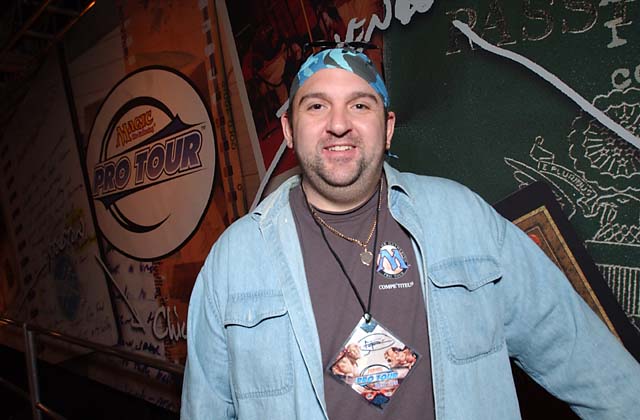 LocontoThe very first Pro Tour started off on a sour note. A giant snow storm crippled the city and shut down the airport. For the only time in the history of the Pro Tour, we were forced to delay the start of the tournament (from 8:00am to 12:00pm). I think Richard summed up the thought of most players when he said, “Okay, whose bright idea was it to have the first Pro Tour in New York in the middle of winter?”
LocontoThe very first Pro Tour started off on a sour note. A giant snow storm crippled the city and shut down the airport. For the only time in the history of the Pro Tour, we were forced to delay the start of the tournament (from 8:00am to 12:00pm). I think Richard summed up the thought of most players when he said, “Okay, whose bright idea was it to have the first Pro Tour in New York in the middle of winter?”
The first Pro Tour used a very untraditional format. You see, an important part of the Pro Tour is marketing. And we wanted to show off the latest set. But the most recent expansion was Magic's all-time design low, Homelands. How can you ensure that Homelands cards show up in the winning Pro Tour deck when very few Homelands cards were showing up in tournaments? Just force every deck to play at least five of them. And then require at least five more cards from every other legal expansion; you know to make it seem a little less obvious. I'm happy to say modern design no longer forces us to make the players play the cards from any particular expansion.
The Pro Tour team wanted to make sure that we had as many “name” players as possible so we created a special invite list for anyone that had done anything at a high profile tournament. The rest of the public was at the victim of the telephone. The Pro Tour Qualifiers didn't start until the second Pro Tour. So how did you get into PT New York? By being a lucky caller on the phone. This led to many jokingly referring to the first Pro Tour as PT Speed Dial. In the end, the first Pro Tour had a very respectable turnout with most of the high profile players showing up.
In addition to the main event, there was also a junior Pro Tour for players under eighteen. (This tournament for scholarships would later morph into the modern day Junior Super Series.) Many future Pro stars (such as Jon Finkel, Bob Maher, and Zvi Mowshowitz) played as juniors in this tournament.
In the main event, after seven rounds, the tournament cut to the top sixteen (with one more exception, all future cuts would be to top eight). One playoff round later and Magic had its first Top Eight. Even for the first Pro Tour, several of the names were already well known. First and foremost was the player that many believed was the current best in the world, Mark Justice. A squeaky clean kid from Salt Lake City, Justice had shown up out of the blue at the Southwestern Regionals where he came in second, which qualified him for US Nationals, which he won. Which qualified him for the 1995 World Championships where he came in third and was team leader of the first winning national team. Coming into the event, the hype was all about Justice, and his Top Eight only further fanned the flames of the claim that he was “the best Magic player in the world”. (As you'll see, this banner passed several times in the years to come.)
But Justice wasn't the only name in the Top Eight. Betrand Lestree was well known for coming in second to Zak Dolan at the very first World Championships. Eric Tam was the reigning Canadian National Champion. And George Baxter was a renowned author of Magic strategy books.
The first Pro Tour would be honored with two different products. The first was a series of eight decks (with unique backs) that duplicated the decks of the Top Eight. The second item was a video of the event put out by Wizards. (Like many events I'll touch upon, the story of the making of the video could be its own column. But I'll leave that for another day.) These two items helped spread the word of the Pro Tour. Players around the globe started playing with the decks and watching the matches. The buzz had begun.
When all was said and done, we realized that things were a bit rough and there was substantial room for improvement, but everyone involved knew we had hit upon something very special.
Pro Tour-Los Angeles (May 3-6, 1996)
FORMAT: Booster Draft (Homelands/4th Edition)
1) Shawn “Hammer” Regnier (United States) – 2nd FINAL DAY
2) Thomas Guevin (United States)
3) Darwin Kastle (United States)
4) Mark Venhaus (United States)
5) Scott Johns (United States)
6) Preston Poulter (United States) – 2nd FINAL DAY
7) Vaughn Sandor (United States)
8) Jeffrey Wood (United States)
PT Los Angeles '96 was the first Pro Tour to use a limited format. And at the time, it was a bit controversial. Back in the day, it was believed that constructed was the only true skill-testing Magic format. Limited, even drafts, were too “luck based”. At least that was the claim by the Europeans. So, they didn't practice. I mean, what was the point? Then came the cut to Day Two. Sixty North Americans. Two Japanese. And two Europeans. Let's just say, the Europeans didn't make the same mistake twice.
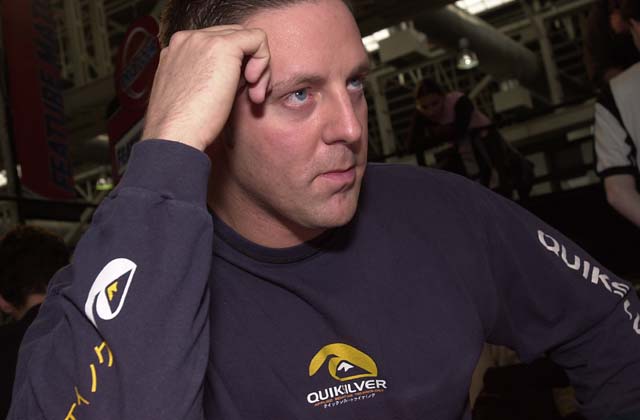 There are many memorable stories from Los Angeles, but I think the most important event was the finals itself. Shawn”Hammer” Regnier was a professional arm wrestler that had opened a game store. He found himself sucked into Magic and became one of the biggest names in New England. Los Angeles was where Hammer went from a local Magic celebrity to a global one. While Hammer drafted well, it was his ability to win games out of sheer mental domination that made this finals an instant classic.
There are many memorable stories from Los Angeles, but I think the most important event was the finals itself. Shawn”Hammer” Regnier was a professional arm wrestler that had opened a game store. He found himself sucked into Magic and became one of the biggest names in New England. Los Angeles was where Hammer went from a local Magic celebrity to a global one. While Hammer drafted well, it was his ability to win games out of sheer mental domination that made this finals an instant classic.
This led to the finals were Hammer went up against his rival, a fellow New Englander, Tom Guevin. The two disliked each other and it showed. The five game final match took four and a half hours. The mood got so intense, Guevin is reported to have excused himself to the bathroom to throw up. Guevin put up a good fight, but Hammer seemed to have every answer; he appeared able to read Guevin's every move.
My personal memory of this Pro Tour is always where I spent the twelve hours of the quarter, semi and final matches. Back then I did the play by play commentary. My color commentator was none other than Mark Justice. Due to a miscommunication, we had no room to set up our equipment, so the technicians used the closest enclosed space they could find. So where did I spend my day? In a phone booth. With Mark Justice. Doing commentary. For twelve hours! (We came this close to ordering out for pizza on air.)
I look back at this event as one of the first real defining Pro Tours. Hammer walked away from Los Angeles as the first Pro Tour brewed Magic star. But the next big star was only a Pro Tour away.
Pro Tour-Columbus (July 6-7, 1996)
FORMAT: Ice Age Block Constructed (Ice Age, Alliances)
1) Olle Rade (Sweden)
2) Sean Fleischman (United States)
3) Alvaro Marques (Canada)
4) Peter Radonjic (Canada)
5) Brian Weissman (United States)
6) Javier Garavito (United States)
7) John Immordino (United States)
8) Scott Johns (United States) – 2nd FINAL DAY
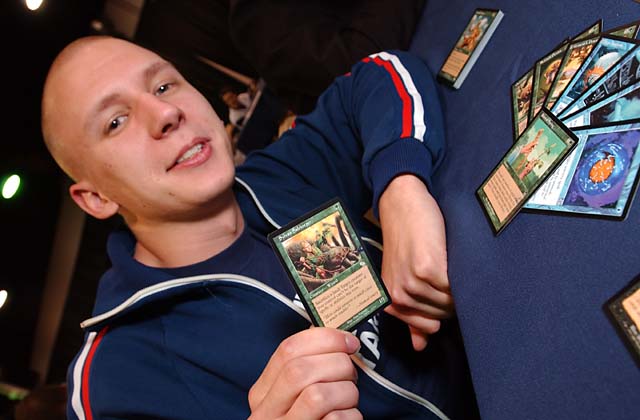 Olle Rade, six years later at PT Boston ‘02This tournament is best known as the arrival of Olle Rade, back then known as “the little Viking”. Of the countries in Europe, Sweden had one of the strongest Magic scenes. And as such always sent a significant number of players (the Swedes were well known for winning the majority of tournaments in all the adjoining countries.) Olle traveled to Columbus with the rather large Swedish contingent. Although seventeen, Rade chose to play in the normal Pro Tour (as opposed to the Juniors) so he could play with his friends. Unfortunately, all the Swedes but a tiny handful had their plane delayed and missed the start of the tournament.
Olle Rade, six years later at PT Boston ‘02This tournament is best known as the arrival of Olle Rade, back then known as “the little Viking”. Of the countries in Europe, Sweden had one of the strongest Magic scenes. And as such always sent a significant number of players (the Swedes were well known for winning the majority of tournaments in all the adjoining countries.) Olle traveled to Columbus with the rather large Swedish contingent. Although seventeen, Rade chose to play in the normal Pro Tour (as opposed to the Juniors) so he could play with his friends. Unfortunately, all the Swedes but a tiny handful had their plane delayed and missed the start of the tournament.
The event was held in Columbus because it was held in conjunction with the Origins convention. Also at the convention was US Nationals. Columbus holds the record as the shortest Pro Tour as it and US Nationals had to be held over three days. The Swiss rounds were just a single day with a cut to a Top Four. (US Nationals had its Top Four finals held on the same day.)
No one at the time realized how big a star Rade would become.
1996 World Championships – Seattle, United States (August 14-18, 1996)
FORMATS: Type 1.5, Booster Draft, Standard
Individual
1) Tom Chanpheng (Australia)
2) Mark Justice (United States) – 2nd FINAL DAY
3) Henry Stern (United States)
4) Olle Rade (Sweden) – 2nd FINAL DAY
5) Matt Place (United States)
6) Scott Johns (United States) – 3rd FINAL DAY
7) Eric Tam (Canada)
8) Tommi Hovi (Finland)
Team
1) United States (Dennis Bentley, George Baxter, Mike Long, Matt Place)
2) Czech Republic (David Korejtko, Jakub Slemr, Ondrej Baudys, Lucas Kocourek)
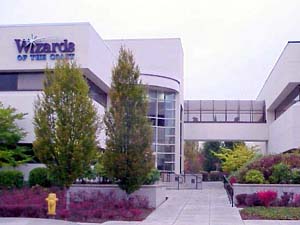 The 1996 World Championships was held at Wizards of the Coast's corporate offices. While it was the third World Championships, it was the first one to be a Pro Tour. The big story of the tournament was Mark Justice's run at being the World Champion. While their were others making a play to be the “best Magic player in the word”, Justice held onto the title a little longer by being a hair's breath away from being the World Champion, the one title he most wanted.
The 1996 World Championships was held at Wizards of the Coast's corporate offices. While it was the third World Championships, it was the first one to be a Pro Tour. The big story of the tournament was Mark Justice's run at being the World Champion. While their were others making a play to be the “best Magic player in the word”, Justice held onto the title a little longer by being a hair's breath away from being the World Champion, the one title he most wanted.
Justice showed up for the final in a three piece suit ready to claim his rightful title. But he was undone by an unkown Australian named Tom Chanpheng. Or as some like to tell it, by Justice himself. Responding to a Balance by Chanpheng that would destroy all the lands in play (in combination with
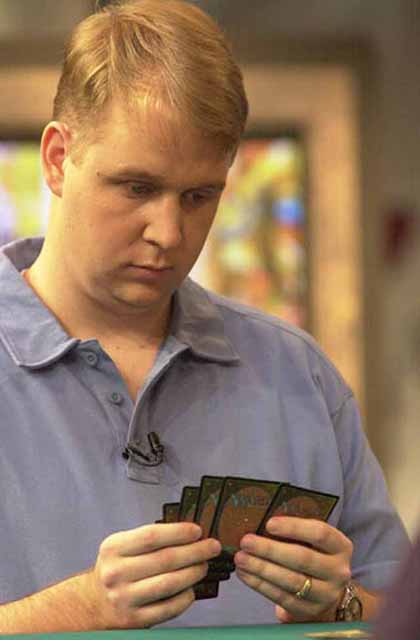 Another tidbit about this event was one of the prizes, a one-of-a-kind card titled, appropriately, 1996 World Champion. The card was encased in the trophy. (I believe Chanpheng sold the trophy many years later to a collector for thousands of dollars.)
Another tidbit about this event was one of the prizes, a one-of-a-kind card titled, appropriately, 1996 World Champion. The card was encased in the trophy. (I believe Chanpheng sold the trophy many years later to a collector for thousands of dollars.)
In the team event, the Americans managed to win for the second year in a row. But the Czech Republic put up a very good fight proving that they were the number two country in Magic.
Scott Johns (yes our illustrious editor) became the first player to have three Pro Tour Top Eights with his finish in this event. Even more impressive was the fact that he had three Top Eight finishes in a row. But the unusual cut to Top Four on the final day of Columbus rather than Top Eight (Johns was 8th after the Swiss rounds) kept this feat from getting as much attention as it deserved.
Henry Stern became the first future R&D member to make a Pro Tour Top Eight. (Both Stern and Justice managed to make back-to-back Worlds Top Four finishes.)
Also, Olle Rade managed to make Top Four allowing him to take the very first Pro Player of the Year title.
SEASON TWO (‘96/'97)
Pro Tour-Atlanta (September 13-15, 1996)
FORMAT: Mirage sealed deck (pre-release)
1) Frank Adler (Germany)
2) Darwin Kastle (United States) – 2nd FINAL DAY
3) Aaron Muranaka (United States)
4) John Yoo (United States)
5) Terry Borer (Canada)
6) Mike Long (United States)
7) Chris Pikula (United States)
8) Matthew Vienneau (Canada)
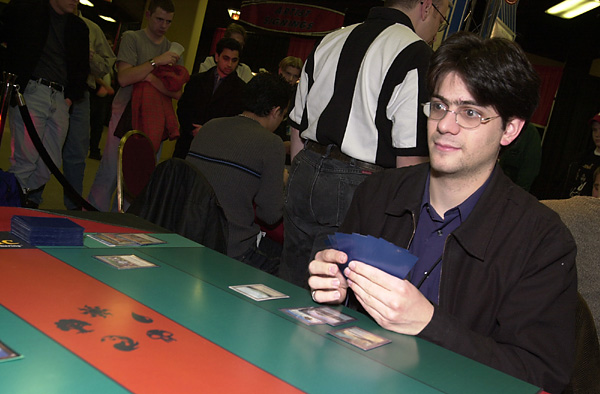 Terry Borer, PT Chicago ‘00Pro Tour Tour Atlanta is known for two things. One is the format. For the first and only time, the Pro Tour hosted a pre-release. And I don't mean concurrently with the event (that would have been the Alliances prerelease held at the first PT Los Angeles.) No, the Pro Tour itself was a prerelease. The Pro Players were handed out cards from Mirage, an expansion that no one had seen.
Terry Borer, PT Chicago ‘00Pro Tour Tour Atlanta is known for two things. One is the format. For the first and only time, the Pro Tour hosted a pre-release. And I don't mean concurrently with the event (that would have been the Alliances prerelease held at the first PT Los Angeles.) No, the Pro Tour itself was a prerelease. The Pro Players were handed out cards from Mirage, an expansion that no one had seen.
My favorite memory was listening to player brag about their decks between deck building and the first round. You see, Ice Age was super stingy on fliers, so players had learned how crucial every flier was. This meant that I walked around hearing this conversation again and again:
“Man, I can't lose. I have eleven fliers!”
“Eleven? I have thirteen!”
The second memorable event is what I consider to be the greatest screw-up in the history of the Pro Tour. In the quarter finals, Canadian Terry Borer is playing American Darwin Kastle. Borer has the win in his hand. All he needed to do was attack and cast his spell. But he gets tricky and asks Kastle “Do you have any fast effects?”
When Kastle replied no, Borer discovered that he had accidentally missed his opportunity to play his spell (he had passed priority). Kastle was able to win on his next turn, knocking Borer out of contention. That mistake didn't just cost him the game and the match and possibly the tournament - it also cost him just enough Pro points such that he later lost the Player of the Year race to countryman Paul McCabe.
Pro Tour-Dallas (November 22-24, 1996)
FORMAT: Standard (But for a time in the future from that weekend)
1) Paul McCabe (Canada)
2) Jason Zila (United States)
3) Brian Hacker (United States)
4) Chris Pikula (United States) – 2nd FINAL DAY
5) George Baxter (United States) – 2nd FINAL DAY
6) Olle Rade (Sweden) – 3rd FINAL DAY
7) Robert Thornburg (United States)
8) Peer Kröger (Germany)
Dallas is famous for a number of things. Paul McCabe won the tournament that would lead to his Pro Player win. Olle Rade made his third Top Eight in his fourth event. This was the beginning of the shift of “best Magic player in the world” from Justice to Rade. He would later cement it when he won the very first Magic Invitational (Magic's all-star game). George Baxter got a game loss in the Top Eight for a mis-registered deck. And the juniors had what many believe was their best finals ever.
Pro Tour-Los Angeles (February 28 – March 2, 1997)
FORMAT: Mirage Block Rochester Draft (Mirage, Visions)
1) Tommi Hovi (Finland) – 2nd FINAL DAY
2) David Mills (United States)
3) Alan Comer (United States)
4) John Yoo (United States)
5) Truc Bui (United States)
6) John Immordino (United States) – 2nd FINAL DAY
7) Brian Weissman (United States) – 2nd FINAL DAY
8) Ben Possemiers (Belgium)
 Tommi Hovi, Worlds ‘01The Pro Tour had had plenty of excitement. But PT LA II was the first real taste of controversy. The finals was between American David Mills and Finn Tommi Hovi. Mills was up two games to one when he made a mistake. He played his card before tapping his lands. Now this may seem tame now as Sixth Edition changed the rules to allow this, but back then, it was a technical violation. And this wasn't the first time Mills had done it.
Tommi Hovi, Worlds ‘01The Pro Tour had had plenty of excitement. But PT LA II was the first real taste of controversy. The finals was between American David Mills and Finn Tommi Hovi. Mills was up two games to one when he made a mistake. He played his card before tapping his lands. Now this may seem tame now as Sixth Edition changed the rules to allow this, but back then, it was a technical violation. And this wasn't the first time Mills had done it.
Mills wasn't used to tapping mana first. So he kept doing it wrong. And each time he did, he got a warning from the judge. At first, they were simple cautions but with each transgression the warnings grew stronger. Finally, Mills was warned that the next time he did it, he would be disqualified. That time happened in the middle of the fourth game. And the head judge, Tom Wylie, true to his word, disqualified him.
Never before had an outcome of a Pro Tour been decided on a disqualification (and to this day it's never happened again). To say the players were upset is an understatement. Some people still refer to the following events as the “player riot” (led by none other than Mark Justice and Tom Guevin). But tournament manager Andrew Finch gave a very eloquent speech and calmed everyone down. Mills was even allowed to keep his money (he was originally DQ'ed without prize).
My favorite memory of this event came right before the finals. As part of the entertainment, I interviewed each finalist before the finals. The feed was put out live to the audience. I was trying to interview Hovi but he replied to each question with a simple one word answer. So my questions got more and more elaborate, trying to force a longer answer out of Hovi. I bent over backwards trying everything I could to get a more complete answer than “yes” or “blue”. But no matter what I did, Hovi wouldn't say anything extra. My interview got more and more warped as it became evident that I was determined to get him to talk. It ended with me breaking into hysterics because the situation became so desperate that I found it funny. Not my shining moment.
Note that this was also the first Top Eight for Alan Comer, who now works for Wizards as part of the Magic Online team.
Pro Tour-Paris (April 11-13, 1997)FORMAT: Mirage Block Constructed (Mirage, Visions)
1) Mike Long (United States) – 2nd FINAL DAY
2) Mark Justice (United States) – 3rd FINAL DAY
3) Darwin Kastle (United States) – 3rd FINAL DAY
4) Henning Rimkus (Germany)
5) Sturla Bingen (Norway)
6) Paul Ferker (United States)
7) Jason Gordon (United States)
8) Jason Zila (United States) – 2nd FINAL DAY
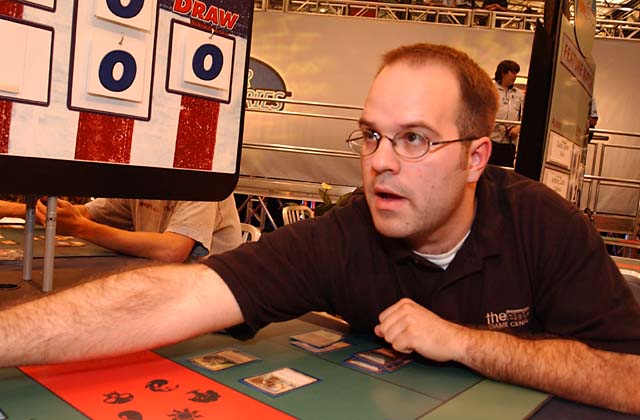 Mike Long, US Nationals ‘02PT Paris (the first PT held outside the US) is filled with all sorts of stories. The biggest one though had to be the finals between Mark Justice and Mike Long. At the time, there were no bigger names in Magic. This was the clash of the titans. And to make matters even stranger, Justice was playing a deck that Long had loaned him. The defining moment occurred when Long got Justice to concede a game Long was incapable of winning.
Mike Long, US Nationals ‘02PT Paris (the first PT held outside the US) is filled with all sorts of stories. The biggest one though had to be the finals between Mark Justice and Mike Long. At the time, there were no bigger names in Magic. This was the clash of the titans. And to make matters even stranger, Justice was playing a deck that Long had loaned him. The defining moment occurred when Long got Justice to concede a game Long was incapable of winning.
Long was planning a combo deck known as Prosperous Bloom (considered by many to be the first tournament caliber combo deck). The deck won by creating a large amount of black mana used to
Another misnomer about this tournament: this was not the first Pro Tour to use the “Play/Draw rule” (known as the Paris Mulligan). It was merely the first constructed Pro Tour to use it. The first Pro Tour with the “Paris Mulligan” was actually the previous Pro Tour in Los Angeles.
Pro Tour-New York (May 30 – June 1, 1997)
FORMAT: Booster Draft (Fifth Edition, Visions)
1) Terry Borer (Canada) – 2nd FINAL DAY
2) Ivan Stanoev (Czech Republic)
3) Gabriel Tsang (Canada)
4) Jeroen Weyden (The Netherlands)
5) Mark Chalice (United States)
6) John Chinnock (United States)
7) Michael Pustilnik (United States)
8) Patrick Chapin (United States)
This is the Pro Tour that Terry Borer won, getting him oh so close to winning Pro Player of the Year. The most interesting factoid about this Pro Tour was that it was the first one to not have an American make the Top Four. It was a sign that the American dominance was slowly starting to fade. In fact, during the entire second season, the only American to win a Pro Tour was Mike Long.
1997 World Championships – Seattle, United States (August 13-17, 1997)
FORMAT: Standard, Mirage Block Rochester Draft (Mirage, Visions, Weatherlight), Extended
Individual
1) Jakub Slemr (Czech Republic)
2) Janosch Kuhn (Germany)
3) Paul McCabe (Canada) – 2nd FINAL DAY
4) Svend Geertsen (Denmark)
5) Gabriel Tsang (Canada) – 2nd FINAL DAY
6) Nikolai Weibull (Sweden)
7) Nate Clarke (United States)
8) John Chinnock (United States) – 2nd FINAL DAY
Team
1) Canada (Gary Krakower, Michael Donais, Ed Ito, Gab Tsang)
2) Sweden (Nikolai Weibull, Mattias Jorstedt, Marcus Angelin, Johan Cedercrantz)
 Jakub SlemrThe international theme of the season continued as only two Americans made the Top Eight, both of which were knocked out in the quarter final round. For years Worlds had been plagued by a reputation that it was won by someone who had “gotten lucky”. This tradition was put to rest as Worlds was finally won by a player that all the pros considered to be one of the best, Jakub Slemr.
Jakub SlemrThe international theme of the season continued as only two Americans made the Top Eight, both of which were knocked out in the quarter final round. For years Worlds had been plagued by a reputation that it was won by someone who had “gotten lucky”. This tradition was put to rest as Worlds was finally won by a player that all the pros considered to be one of the best, Jakub Slemr.
This was also the first event to be filmed for ESPN 2. The producer even took the US Team shopping to get them appropriate shirts just to see them not make Top Two (as the winners of the first two team events, the US was the heavy favorite). Canada took the honors, keeping the team title in North America.
As I said earlier, Canadian Paul McCabe went on to win the second Pro Player of the Year.
My favorite story of this event involves former Tournament Manager Jeff Donais (this was before he came to work at Wizards). Donais had an 11-1 record over the first two days. All he needed to do was go 2-4-1 in the final Extended day. If you glance at the Top Eight, you know how this story turned out. Donais played a horrible Extended deck with
Pro Tour-Chicago (October 10-12, 1997)
FORMAT: Extended
2) David Mills (United States) – 2nd FINAL DAY
3) Jon Finkel (United States)
4) Max Suver (United States)
5) Adrian Sayers (United States)
6) Justin Schneider (United States)
7) Kyle Rose (United States)
8) Olle Rade (Sweden) – 4th FINAL DAY
I remember looking at the Top Eight list thinking to myself what a high profile roster we had. The only unknown was some first timer by the name of Randy Buehler. In the end, he found himself playing against David Mills for the title. And this time, Mills wasn't about to tap his mana wrong. Unfortunately (for Mills at least), he failed to keep from making mistakes, the most crucial one of which allowed Buehler to win the final game. One of my all-time favorite expressions was on Randy's face when he realized that Mills had screwed up and that he had actually won. I've never seen someone more surprised.
One of these days I need to track down the video where I interviewed Randy. He was in complete and utter shock. But he was happy. Little did any of us know how this “unknown” would go on to shape the world of Magic.
Also worth noting, Olle Rade became the first person to have a fourth Final Day appearance.
Pro Tour-Mainz (December 5-7, 1997)
FORMAT: Tempest Rochester Draft (Tempest)
1) Matt Place (United States) – 2nd FINAL DAY
2) Steven O'Mahoney-Schwartz (United States)
3) Peer Kröger (Germany) – 2nd FINAL DAY
4) Kurt Burgner (United States)
5) John Ormerod (England)
6) Chris Bishop (United States)
7) Mark Le Pine (United States)
8) Gabriele Pisicchio (Italy)
Would you believe that this event was also won by someone that now works in R&D (the joke is that David Price is next up for a job)? Matt Place took home the honors after capitalizing on a screw-up by finalist Steven O'Mahoney Schwartz (proving that when you choose to activate a creature can cost you the game).
This Pro Tour goes down as probably the nicest venue. It was played in a castle. Not a convention hall. Not a hotel ballroom. A castle.
Pro Tour-Los Angeles (March 6-8, 1998)
FORMAT: Tempest Block Constructed (Tempest)
1) David Price (United States)
2) Ben Rubin (United States)
3) David Bachmann (United States)
4) Adam Katz (United States)
5) Kyle Rose (United States) – 2nd FINAL DAY
6) Jakub Slemr (Czech Republic) – 2nd FINAL DAY
7) Svend Geertsen (Denmark) – 2nd FINAL DAY
8) Andrew Wolf (United States)
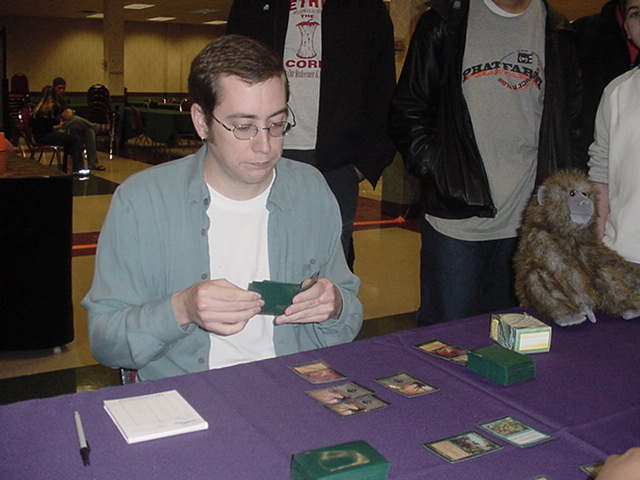 Dave Price, GP Milan ‘02This was the only Pro Tour using the Block Constructed format that only had a single set. In the end, Dave Price took home the title by figuring out the power of
Dave Price, GP Milan ‘02This was the only Pro Tour using the Block Constructed format that only had a single set. In the end, Dave Price took home the title by figuring out the power of
Dave Price's victory also showed how stars could be built out of likable players. Price had earned his reputation by qualifying for every Pro Tour and then never doing well enough at the Pro Tour to qualify for the next event, meaning he had to go back to the qualifiers. Dubbed King of the Qualifiers, Price had never missed a Pro Tour. Upon winning he said, “I guess this means I'm qualified for the next one?”
Pro Tour-New York (August 17-19, 1998)
FORMAT: Tempest Booster Draft (Tempest, Stronghold)
1) Jon Finkel (United States) – 2nd FINAL DAY
2) Dominic Crapuchettes (United States)
3) John Chinnock (United States) – 3rd FINAL DAY
4) David Bachmann (United States) – 2nd FINAL DAY
5) Truc Bui (United States) – 2nd FINAL DAY
6) Nate Clarke (United States) – 2nd FINAL DAY
7) Mark Justice (United States) – 4th FINAL DAY
8) Casey McCarrel (United States)
Jon Finkel, Origins '96 |
One of the popular Pro Tour topics is to discuss what Top Eight had the most star power. What was the most impressive Top Eight? For many years, the answer was this tournament. Six of the eight finalists had already been in a Pro Tour Final Day (and one player, Crapuchettes, had the honor of being the only player to ever be announced in the Top Eight only to have it later rescinded when we realized that there had been a mis-registered match – at the first PT LA).
In the end, the tournament became what some have dubbed the beginning of the Era of Finkel. Finkel had finished Top Eight at the Pro Tour Buehler had won, but this event was the start of Finkel's first impressive run.
The other big story of this tournament was the discovery in the last Swiss round that popular player John Chinnock had reportedly cheated. Using a technique where you appear to shuffle but do not (known as “breaking the bridge”), Chinnock was caught by numerous spectators (but not a judge). Gossip spread like wildfire prompting Chinnock to drop out of professional competition at the end of the tournament. This was the first real glimpse of the power of the players policing one another.
1998 World Championships – Seattle, United States (August 12-16, 1998)
FORMAT: Tempest Booster Draft, Standard, Tempest Block Constructed (Tempest, Stronghold, Exodus)
Individual
1) Brian Selden (United States)
2) Ben Rubin (United States) – 2nd FINAL DAY
3) Jon Finkel (United States) – 3rd FINAL DAY
4) Raphael Levy (France)
5) Scott Johns (United States) – 4th FINAL DAY
6) Chris Pikula (United States) – 3rd FINAL DAY
7) Brian Hacker (United States) – 2nd FINAL DAY
8) Alan Comer (United States) – 2nd FINAL DAY
Team
1) United States (Matt Linde, Mike Long, Bryce Currence, Jon Finkel)
2) France (Pierre Malherbaud, Manuel Bevand, Marc Hernandez, Fabien Demazeau)
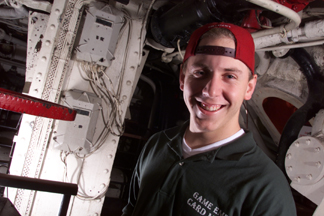 Brian Selden, PT LA ‘00If the second season was about international dominance, the third season was Amercia's answer back. Every single Pro Tour of this season was won by an American including the World Championship won by newcomer Brian Selden. To further the theme, the American team came back to win their third title. Interestingly, Mike Long had made the American team three years out of the last four. The same three they won.
Brian Selden, PT LA ‘00If the second season was about international dominance, the third season was Amercia's answer back. Every single Pro Tour of this season was won by an American including the World Championship won by newcomer Brian Selden. To further the theme, the American team came back to win their third title. Interestingly, Mike Long had made the American team three years out of the last four. The same three they won.
Finkel's third place finish started the talk of Finkel grabbing the “best Magic player in the world” title. In the last few years, no one player had be able to solidify their right to claim it. Finkel's third place finish also allowed him to beat out Buehler to become the third Pro Player of the Year.
This would be the last World Championships held in Seattle. Starting with the next year they would rotate between North America, Europe and the Asia Pacific Region (most often Japan).
SEASON FOUR (‘98/'99)
Pro Tour-Chicago (September 25-27, 1998)
FORMAT: Urza's Saga Rochester Draft (Urza's Saga)
1) Dirk Baberowski (Germany)
2) Casey McCarrel (United States) – 2nd FINAL DAY
3) Jeff Fung (Canada)
4) Benedikt Klauser (Austria)
5) Jon Finkel (United States) – 4th FINAL DAY
6) Ryan Fuller (Canada)
7) Martin Cedercrantz (Sweden)
8) Dominique Coene (Belgium)
This was the second Pro Tour in Chicago and yet again, a first time player walked away as the victor. Like Buehler though, German Dirk Baberowski would go on to prove to be no fluke. Finkel's third Final Day in a row cemented his claim as “best Magic player in the world”. (No one had had back-to-back-to-back Top Eights since Scott Johns.)
Pro Tour-Rome (November 13-15, 1998)
FORMAT: Extended
1) Tommi Hovi (Finland) – 3rd FINAL DAY, FIRST REPEAT CHAMPION
2) Nicolas Labarre (France)
3) Mark Le Pine (United States) – 2nd FINAL DAY
4) Federico Dato (Italy)
5) Olle Rade (Sweden) – 5th FINAL DAY
6) Justin Gary (United States)
7) Erik Lauer (United States)
8) Andre Konstanczer (Germany)
This tournament goes down as being the highest power-level format ever played at the Pro Tour. The format was Extended with the recently released Urza's Saga expansion.
The event had numerous firsts. Finn Tommi Hovi became the first player to win two Pro Tours. (Hovi was particularly happy because he had felt that he hadn't properly won his first Pro Tour.) Olle Rade became the first player to have five Final Days. And for the first time, a European won a European Pro Tour (The previous two, in Paris and Mainz, were won by Americans.)
Pro Tour-Los Angeles (February 26-28, 1999)
FORMAT: Urza's Saga Rochester Draft (Urza's Saga)
1) Steven O'Mahoney-Schwartz (United States) – 2nd FINAL DAY
2) Jon Finkel (United States) – 5th FINAL DAY
3) Worth Wollpert (United States)
4) Terry Lau (Canada)
5) Lucien Bui (France)
6) Patrick Chapin (United States) – 2nd FINAL DAY
7) Svend Geertsen (Denmark) – 3rd FINAL DAY
8) Mike Long (United States) – 3rd FINAL DAY
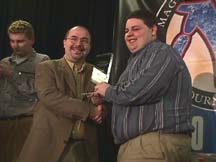
Pro Tour-New York (April 30 – May 2, 1999)
FORMAT: Urza's Saga Block Constructed (Urza's Saga, Urza's Legacy)
1) Casey McCarrel (United States) – 3rd FINAL DAY
2) Shawn Keller (United States)
3) Zvi Mowshowitz (United States)
4) David Humpherys (United States)
5) Robert Dougherty (United States)
6) Christian Luhrs (Germany)
7) Nicolas Labarre (France) – 2nd FINAL DAY
8) Terry Tsang (Canada)
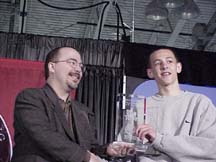 While most of the players in this Top Eight did not have a previous Final Day appearance, many members would go on to be Top Eight staples. (One of the popular ways historically to judge the power level of a Top Eight is to add up all the Final Day appearances. This group's current number, for instance, is 26.)
While most of the players in this Top Eight did not have a previous Final Day appearance, many members would go on to be Top Eight staples. (One of the popular ways historically to judge the power level of a Top Eight is to add up all the Final Day appearances. This group's current number, for instance, is 26.)
Another significance of this Pro Tour is that it showed the importance that Pro Tour teams were playing behind the scenes. The top two finishes, McCarrel and Keller (along with eighth place finisher Terry Tsang) had all worked together on a playtesting team named the Jumble. Rob Dougherty and Dave Humpherys were members of the premiere Boston team, Team Your Move Games, while Zvi was the newly added member of Team Mogg Squad, another very well known team.
1999 World Championships – Yokohama, Japana (August 4-8, 1999)
FORMAT: Urza's Saga Rochester Draft (Urza's Saga, Urza's Legacy, Urza's Destiny), Standard, Extended
Individual
1) Kai Budde (Germany)
2) Mark Le Pine (United States) – 3rd FINAL DAY
3) Raffele Lo Moro (Italy)
4) Matt Linde (United States)
5) Jakub Slemr (Czech Republic) – 3rd FINAL DAY
6) Jamie Parke (United States)
7) Gary Wise (Canada)
8) Nicolai Herzog (Norway)
Team
1) United States (Kyle Rose, John Hunka, Zvi Mowshowitz, Charles Kornblith)
2) Germany (Marco Blume, Patrick Mello, David Brucker, Rosario Maij)
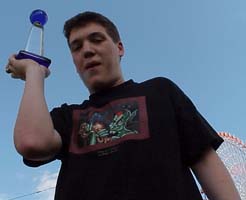 Kai Budde currently holds the record for the most Pro Tour wins at seven. 1999 World Championships is probably best known as Budde's first win. Budde had shown up at a few Pro Tours in the previous few years (his first event was playing in the last Junior Pro Tour at the Pro Tour New York won by Terry Borer), but it wasn't until he swept four Grand Prix in a row (going second, first, first, first) that the Pro Tour regulars started to take notice. Even then, it would be years before Budde would topple Finkel from the top spot.
Kai Budde currently holds the record for the most Pro Tour wins at seven. 1999 World Championships is probably best known as Budde's first win. Budde had shown up at a few Pro Tours in the previous few years (his first event was playing in the last Junior Pro Tour at the Pro Tour New York won by Terry Borer), but it wasn't until he swept four Grand Prix in a row (going second, first, first, first) that the Pro Tour regulars started to take notice. Even then, it would be years before Budde would topple Finkel from the top spot.
Budde's win was crushing as he defeated Le Pine in the shortest amount of time Pro Tour final in history (somewhere around twenty minutes). Germany also proved their strength in the team event as they came very close to taking the team title. But in the end, the US took their fourth team title. Budde's win did allow him to take the title of Pro Player of the Year.
SEASON FIVE (‘99/'00)
Pro Tour-Washington DC (September 3-5, 1999)
FORMAT: Team Urza's Saga Block Sealed (Urza's Saga, Urza's Legacy, Urza's Destiny) - first day, Team Urza's Saga Rochester Draft (Urza's Saga, Urza's Legacy, Urza's Destiny) - final two days
1) Team Your Move Game [Rob Dougherty (United States) – 2nd FINAL DAY, Dave Humpherys (United States) – 2nd FINAL DAY, Darwin Kastle (United States) – 4th FINAL DAY]
2) Team Game Empire [Kurt Burgner (United States) – 2nd FINAL DAY, Alan Comer (United States) – 3rd FINAL DAY, Brian Selden (United States) – 2nd FINAL DAY] 3) Team Antarctica [Jon Finkel (United States) – 6th FINAL DAY, Dan O'Mahoney-Schwartz (United States), Steven O'Mahoney-Schwartz (United States) – 3rd FINAL DAY] 4) Team THL [Marc Aquino (United States), Richard Jones (United States), Drew McLean (United States)]
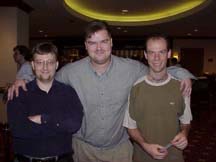 Pro Tour Washington D.C. was the introduction of the team format. The event was won by Team Your Move Games, one of the highest profile Pro teams on the tour. The interesting story of the event was a food poisoning that took out many of the players and staff. One player was Rob Dougherty, who played the finals sick as a dog. (It's interesting to note that the one other high profile “playing the finals sick” was none other than teammate Darwin Kastle at the Magic Invitational in Rio de Janeiro.) Dougherty managed to win his finals match despite having to take a few bathroom breaks.
Pro Tour Washington D.C. was the introduction of the team format. The event was won by Team Your Move Games, one of the highest profile Pro teams on the tour. The interesting story of the event was a food poisoning that took out many of the players and staff. One player was Rob Dougherty, who played the finals sick as a dog. (It's interesting to note that the one other high profile “playing the finals sick” was none other than teammate Darwin Kastle at the Magic Invitational in Rio de Janeiro.) Dougherty managed to win his finals match despite having to take a few bathroom breaks.
This finals has the distinction of being only one of two Pro Tours where all the players on the final day were from the same country (both this and PT LA I were all-American finals). In addition, Finkel became the first player to have six Final Day appearances.
Pro Tour-London (October 15-17, 1999)
FORMAT: Urza's Saga Booster Draft (Urza's Saga, Urza's Legacy, Urza's Destiny)
1) Kyle Rose (United States) – 3rd FINAL DAY
2) Thomas Preyer (Austria)
3) Mike Bregoli (United States)
4) Ben Rubin (United States) – 3rd FINAL DAY
5) Gunnar Refsdal (Germany)
6) William Jensen (United States)
7) Marc Hernandez (France)
8) Darwin Kastle (United States) – 5th FINAL DAY
This was another solid Pro Tour Top Eight. Darwin Kastle joined the Five Final Day club. And it was Randy Buehler's final Pro Tour.
Pro Tour-Chicago (December 3-5, 1999)
FORMAT: Extended
1) Bob Maher, Jr. (United States)
2) Brian Davis (United States)
3) Christian Lührs (Germany) – 2nd FINAL DAY
4) Raphael Levy (France) – 2nd FINAL DAY
5) Alan Comer (United States) – 4th FINAL DAY
6) Dirk Baberowski (Germany) – 2nd FINAL DAY
7) Tony Dobson (England)
8) Hector Fuentes (Spain)
This Pro Tour was all about the final match between Pro Tour veteran Bob Maher and first timer Brian Davis. It was Chicago so history tipped the scales in Davis' favor. In fact, so did the cards. But Davis seemed intent on not winning. Time and time again, Davis would have Maher on the ropes only to make yet another mistake that allowed Maher to somehow win the game. The joke at the tournament was that Davis was the first person to go 5-0 in the finals and lose. This Pro Tour cemented Maher's nickname, “The Great One”.
Pro Tour-Los Angeles (February 4-6, 2000)
FORMAT: Mercadian Masques Booster Draft (Mercadian Masques)
1) Trevor Blackwell (United States)
2) Chris Benafel (United States)
3) Kurt Burgner (United States) – 3rd FINAL DAY
4) Mike Long (United States) – 4th FINAL DAY
5) Erno Ekebom (Finland)
6) Bruce Cowley (United States)
7) Andrew Nishioka (United States)
8) Brian Selden (United States) – 3rd FINAL DAY
The story of this tournament was yet another controversy concerning Magic's Bad Boy, Mike Long. In the final Swiss round, Long played against Darwin Kastle. Kastle called over the judges as he believed Long has illegally maniupulated his deck. The judges reportedly believed Kastle but felt they could not prove any wrong doing on Long's behalf. Long was allowed to continue playing. Long won the match and advanced to the Top Eight with a great deal of complaint from the players. Long proved though that he could get people in the seats as the audience for his semi-final match outnumbered the eventual finals. (Players seemed to love watching him lose.)
Pro Tour-New York (April 14-16, 2000)
FORMAT: Mercadian Masques Block Constructed (Mercadian Masques, Nemesis)
1) Sigurd Eskeland (Norway)
2) Warren Marsh (England)
3) Ben Rubin (United States) – 4th FINAL DAY
4) Mattias Kettil (Sweden)
5) John Larkin (Ireland)
6) Mike Bregoli (United States) – 2nd FINAL DAY
7) Travis Turning (United States)
8) John Hunka (United States)
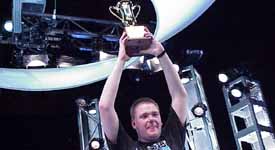 Due to the birth of my daughter Rachel, this was the first Pro Tour I ever missed. I am told that this wins the title of most boring format every played at a Pro Tour. The entire field broke down to two decks (Rebels and Rising Waters) both of which were painfully slow, especially when they played their mirror or each other. The event was won by popular Norwegian Sigurd Eskeland.
Due to the birth of my daughter Rachel, this was the first Pro Tour I ever missed. I am told that this wins the title of most boring format every played at a Pro Tour. The entire field broke down to two decks (Rebels and Rising Waters) both of which were painfully slow, especially when they played their mirror or each other. The event was won by popular Norwegian Sigurd Eskeland.
2000 Worlds Championship – Brussels, Belgium (August 2-6, 2000)
FORMATS: Mercadian Masques Block Booster Draft (Mercadian Masques, Nemesis, Prophecy), Mercadian Masques Block Constructed (Mercadian Masques, Nemesis, Prophecy), Standard
Individual
1) Jon Finkel (United States) – 7th FINAL DAY, 2nd PRO TOUR WIN
2) Bob Maher, Jr. (United States) – 2nd FINAL DAY
3) Dominik Hothow (Germany)
4) Benedikt Klauser (Austria) – 2nd FINAL DAY
5) Tom van de Logt (The Netherlands)
6) Helmut Summersberger (Austria)
7) Janosch Kuhn (Germany) – 3rd FINAL DAY
8) Nicolas Labarre (France) – 3rd FINAL DAY
Team
1) United States (Jon Finkel, Chris Benafel, Frank Hernandez, Aaron Forsythe)
2) Canada (Ryan Fuller, Murray Evans, Gab Tsang, Sam Lau)
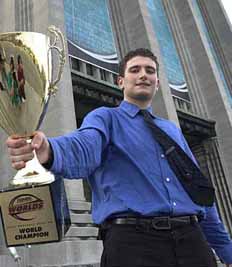 Finkel's results had fallen off. He decided to put some energy to brining his game back up to speed. During the summer of 2000, Finkel won US Nationals and the World Championships as both an individual and as the captain of the US Team (a feat that had never before been accomplished). Clearly, Finkel was still number 1.
Finkel's results had fallen off. He decided to put some energy to brining his game back up to speed. During the summer of 2000, Finkel won US Nationals and the World Championships as both an individual and as the captain of the US Team (a feat that had never before been accomplished). Clearly, Finkel was still number 1.
The finals of this Pro Tour is another one often picked as one of the greatest finals in Pro Tour history. Jon Finkel faced off against friend and team member Bob Maher. The two were playing identical decks with just a one card difference. The first game between the two is one of the most exciting games played in a Pro Tour final. The game swung back and forth as each player seemed to be clinching the game only to see the other player wrest it away.
In the end, Finkel was victorious (making him the second player to win two Pro Tours and the first to have seven Final Day appearances) but Maher's second place finish allowed him to pass Darwin Kastle and take the fifth Pro Player of the Year title.
Half Way There
It turns out the there's too much Pro Tour history for a single column, even in small bites! So turn in for Part II in two weeks (next week's a theme column) when I'll finish my walk down memory lane.
Join me next week when I talk Ice, Ice baby.
Until then, may you enjoy learning how much history an 11 year old can have.
Mark Rosewater

